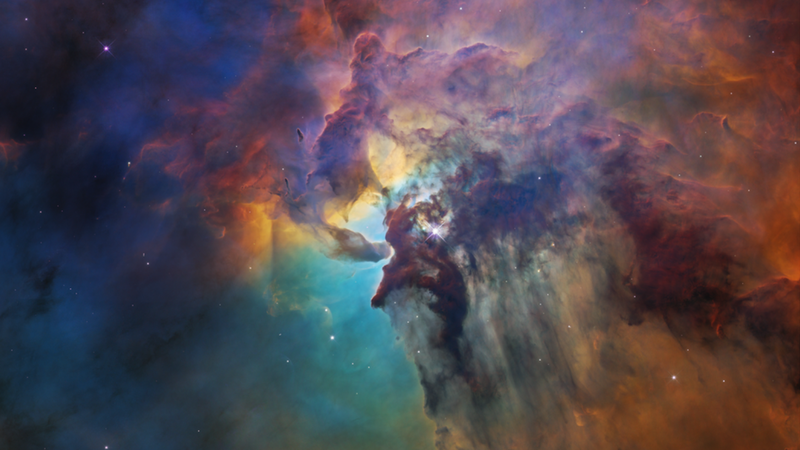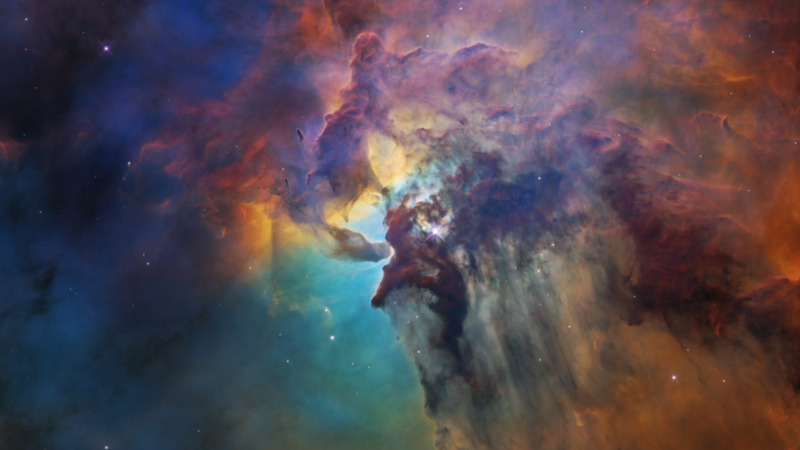
NASA has released incredible new images of the Lagoon Nebula taken by the Hubble space telescope, in honor of its 28th anniversary and presumably 4/20. Dude… have you ever like… thought about how small we are… and how big the universe is…?
These images show the Lagoon Nebula, just 4,000 light-years away, in intense detail. Hubble imaged the star-forming region both in visible light and infrared, with the latter allowing scientists to cut through the dust to peer at the stars forming inside. And the new views really show off Hubble’s abilities.
“This thing is huge on the sky, about five times the size of the full moon, but it’s mostly too dim for our eyes to see,” NASA astronomer Michelle Thaller told Gizmodo. “It looks like a smudge with a pair of binoculars or a small telescope, but when the Hubble looks at it, it’s an incredibly beautiful, twisting tornado-like structure of dark dust.”
More like infrarad.
The Hubble spacecraft first launched in in 1990, and from its orbit around Earth it captures both visible and infrared light to study the night sky. It takes images in single wavelengths, which represent light emissions from different species of atoms. Scientists then process these images by mapping each light emission to a different color in order to create the image you’re seeing. More about that here.
Advertisement
While 28 years might sound old for a science experiment, Hubble is still pumping out results. Just this year it captured the most distant single star yet, learned more about a strange stellar ring, watched two galaxies merge, and created lots of new images of the Messier objects, the distant smudges first described by astronomer Charles Messier in the 18th century.
I don’t know who at NASA is in charge of timing their news releases, but I assume they know exactly what they’re doing.
Advertisement
[NASA]













